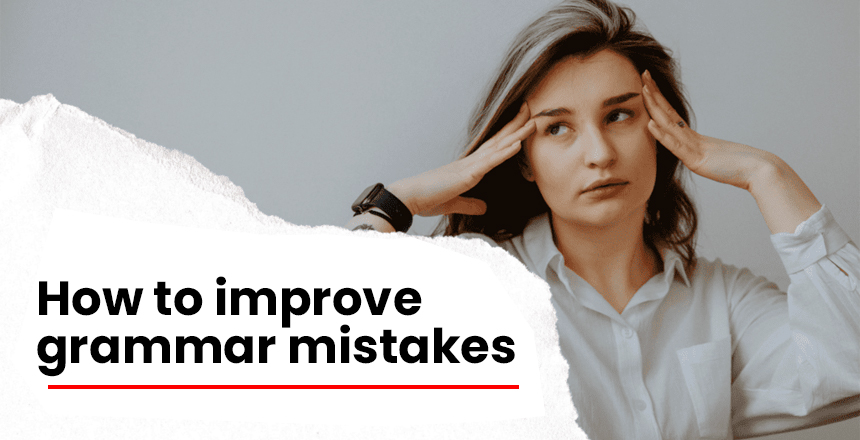Some tips others have offered toward how to improve grammar mistakes include:
The fact is that being able to write grammatically is crucial for effective communication in
different spheres of our lives, starting with e-mail correspondence and ending with creating a
report in the workplace or leaving a comment on the social network. But grammar is another
challenging aspect that one can get easily wrong, even when speaking the English language as
a first language. The good news of the fact, however, is that with sincere effort, which equals
practice, the grammar can be made significantly better. Nothing is more disheartening than to
prepare a document or an article only to be criticized for your grammatical mistakes; continue
reading to find out essential tips on how to catch grammar mistakes .
Ineffective communication tool: finding and correcting common mistakes.
Some mistakes with grammar are found to be more frequent than others are. This means that
putting your effort into the common mistakes commits you to making a change in the most
impactful areas. Some key grammar pitfalls to watch for include:
- External mistakes: omission of commas in consecutive phrases and overly usage of periods and exclamation marks. Bring written pieces home to read them more carefully and locate mistakes, especially in the use of punctuation marks. Also, make sure that all the sentences of the same are punctuated with an end mark, and also that proper use of commas for clause separation and linking is used.
- Subject-verb concord: when a singular subject is conjugated with a plural verb or when a plural subject is conjugated with a singular verb (common error). One such common error is a type of pronominal reference error that I called ‘They are going to the game’. Review each sentence to ensure that when counting the subject and verb—when counting both the nouns—one will find that they are in the same number.
- Grammatical issues include: run on sentences/sentence fragments—the practice of letting the sentences comprise too many independent clauses or else chopping them off is wrong. Look for areas where you can insert semicolons or periods into the sentence, and look out for any sentences for which you can eliminate because they are missing a subject or a predicate.
- Misplaced modifiers: when the descriptive word or the phrase appears to define an incorrect
part of the activity, then its relocation solves the problem (e.g., in the form of a documentary that
we watched at home, my view about the matter was altered).
Proofread Carefully
Catching grammar issues is however one of the best strategies, which suggests one puts down the writing materials and takes a break before proofreading with another set of ‘new’ eyes. Just scroll down line by line and think about each sentence’s readability and whether there might be some grammatical mistake there. When you are confused, make a note of it, and then you can go and rectify this mistake during revision, not during the live broadcast.
To the same extent, a student should read written pieces aloud because it enables one to detect
grammatical mistakes—when a sentence sounds awkward or has a doubtful meaning, one
comprehends it read aloud. Having somebody else, perhaps a friend or a close relative, review
the paper is another beneficial procedure too. Ask for overall clarity and grammar comments
when you submit your entries, though.
Use the Grammar Tools of the Writing Application Wisely
Technology provides useful help today to learn grammar to write without mistakes in documents
these days. Word processors like Microsoft Word come with built-in spelling and grammar
check, which enables you to type out your piece of writing while at the same time highlighting
potential problems. Applications of writing like Grammarly offer a comprehensive explanation of
the grammar mistakes. It is very useful to get computer-generated feedback, but one should not
necessarily obey each and every recommendation suggested. The algorithms that tend to be
used do not always correctly point to the error or the right correction. There should be flagged
areas, but preferably, make your own decision.
Smaller written fragments can also be copied to online grammar-checking services to get more
specialized help in double-checking specific wording and printing. The desktop tools do not
allow for this more focused review, but the website versions of Grammarly and Hemingway
Editor do. However, it must be noted that before agreeing to every change that the computer
recommends, users should think about it before clicking yes.
The right English grammar rules and guides
If you believe that you are deficient in grammar knowledge or are struggling to recall particular
rules regarding punctuation, subject-verb agreement, modifier placement, and more, do not
hesitate to refresh your grammar knowledge. Additionally, there are several guides, including
Purdue’s Online Writing Lab, where one can find out how or if some constructs are used and
structured in the framework of the rules of the English standard. Look for examples of good and
bad grammar.
You can also employ other free grammar learning tools, such as Duolingo and Geraldine Woods
weekly free grammar class. Do not limit grammar practice to their all-too-territorial act of
equating it to a four-week or month course. When devising rules, use the noted or bookmark
rules to identify mistakes you make often, which should be read often. Regarding grammar
rules, one must constantly make use of them; it will help develop permanent reference to the
item.
Practice, practice, practice!
Again, the saying ‘practice makes perfect’ holds true; using writing and self-editing as tools to reinforce grammar knowledge serves to break bad habits (and reinforce any changes). Try to write a small piece—it may be a paragraph or two—a day. Technically, you should be looking closely for any grammar error as you are able to proofread your practice pieces. Recording is helpful to keep track of the kind of errors that you mostly encounter so that they can help you in rule study; after some time you are aware of the mistakes that you usually make as you rush to
complete a note.
One can also write from old pieces done in school, at work, or even in emails to self-edit once
again, but this time round with a grammar lens. Of course it is incredibly time-consuming, but
rereading old writing gives a realistic feel to editing as well as allowing you to observe the
progress of your grammar. Perhaps the samples should be retained over the months in a
grammar editing portfolio of sorts in order to assess the improvement made.
When in doubt, simplify.
Sometimes it becomes very annoying to fix grammar; the more you do it, the more you get
overwhelmed by the rules—and you are lost as to what seems perfect to fix—then you consider
quitting. Perversely, don’t always try and look for a more elegant cut—sometimes, less truly is
more. It is demonstrated that separate lengthy prepositions with a lot of commas into several
clear, single-easy sentences linked with a single concept. Get rid of any unnecessary adjectives,
adverbs, or phrases that don’t have a bearing. When you have any uncertainty regarding the
correct format to use, simply rid your grammar of such unconventional constructs.
Try and keep a sentence as brief with as little complexity of elements as possible; at least you
must include some good information in the analysis. Next, you have eliminated possible areas
where grammatical errors could creep in and laid a clean environment that you can easily
review and enhance. Let’s consider this as a sort of going back to the basics of each grammar,
from which to advance.
Most of the lesson objectives should be taught through multi-sensory learning.
People within the class setting are blessed with different learning modes, either visual, audio, or
even physical touch. It is necessary to use the grammar study techniques that will come
comfortable for you to solve. For illustrations, I would prepare my own charts, diagrams, or
tables to facilitate illustrations on how grammar rules are tackled in a step-by-step process. If
you are good at following information by hearing, then why not read the grammar guides aloud
and then whisper good examples to yourself? To take advantage of the kinesthetic learning
style, one should write grammar rules from the heart or use whiteboards and flashcards to recall
the concepts.
You might also ask if in your local library branch or community center there is any grammar
workshop being offered. For some, an ability to listen and to take notes during such options as
live note-taking, a possibility to practice with in-class exercises, and a possibility to chat about
anything, including questions, to a teacher might help with grammar. Ensure that a student goes
through all forms of learning activities to find which particular form has the greatest effect on a
student regarding the issue being addressed in grammar rules.
Conclusion
Daily writing exercise where the individual writing has to apply the grammar rule, identification of specific areas where the individual has problems in grammar, and careful use of tools—almost anyone can build up a good standard of English grammar. When you start gaining these habits or traits, it is important to remember this and be patient with yourself. Whenever one wants to construct something stable, it needs time and patience, and this applies to developing perfect grammar as well. That being said, great improvement is definitely very doable when doing it with the right amount of passion and strategy for your learning style. Here are some notes to apply them and to write with more polish, clarity, and effectiveness in all aspects of work and life.








